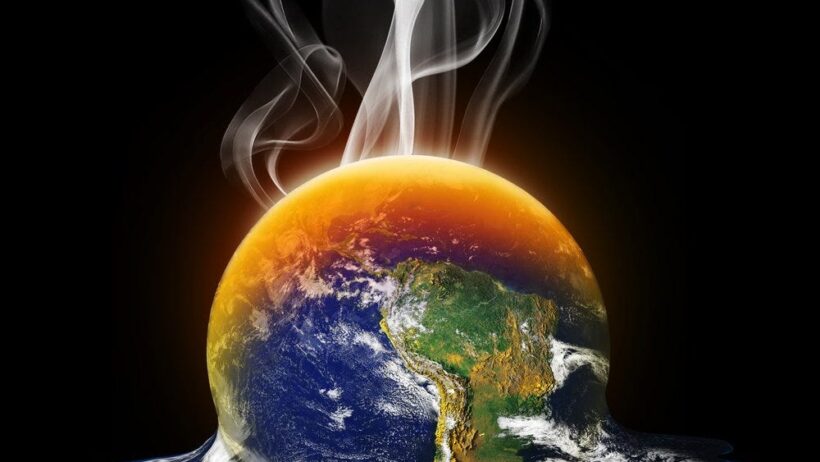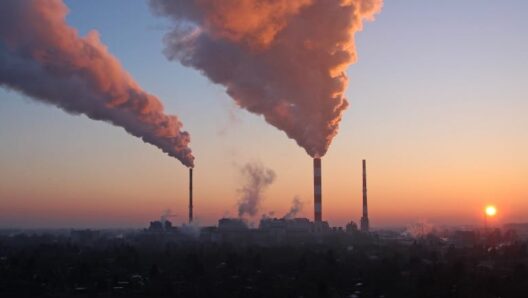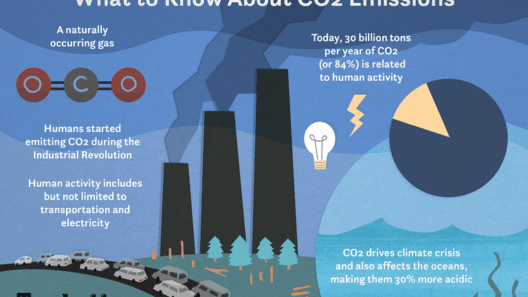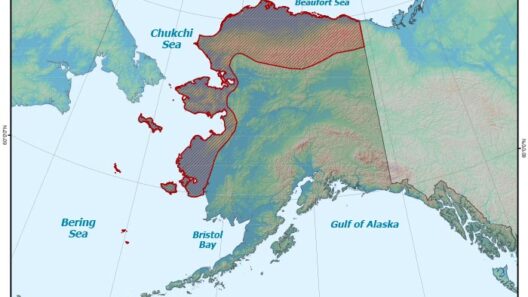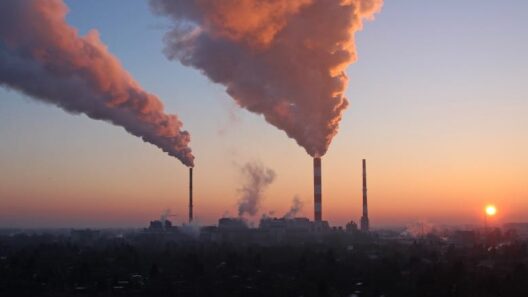Climate change has emerged as one of the most pressing challenges of our time. Among the various greenhouse gases contributing to this phenomenon, ozone (O₃) and methane (CH₄) often incite significant interest and debate regarding their relative impacts on global warming. Both gases are potent greenhouse agents, but the complexity of their sources, behaviors, and atmospheric lifespans presents a rich tapestry for exploration.
To begin understanding their impacts, it’s essential to examine the sources of these gases. Methane is primarily emitted during the extraction and transport of fossil fuels, from agricultural practices—particularly enteric fermentation in livestock—and from landfills. This gas is produced by anaerobic decomposition, meaning that organic matter breaks down without sufficient oxygen, resulting in its release. On the other hand, ozone is not directly emitted but rather formed through reactions involving precursors such as volatile organic compounds (VOCs) and nitrogen oxides (NOₓ) in the presence of sunlight. Thus, while methane is a product of distinct processes, ozone is an indicator of atmospheric reactions driven by a range of pollutants.
A pivotal factor in assessing the global warming potential (GWP) of these gases is their potency in trapping heat. Methane is significantly more effective than carbon dioxide (CO₂) at trapping heat, possessing a GWP of approximately 28–36 times that of CO₂ over a 100-year period. This means that a ton of methane can lead to 28 to 36 times more warming than a ton of CO₂ during that timeframe. In contrast, ozone’s GWP is more variable and contingent upon its altitude; at lower altitudes, where it contributes to ground-level air pollution, it acts as a powerful greenhouse gas, but its effects dissipate at higher altitudes where it contributes to stratospheric ozone depletion rather than warming.
When examining the atmospheric lifetime of these gases, a striking difference emerges. Methane has a relatively short atmospheric lifespan of about a decade, but its immediate warming potential during that time is immense. Conversely, ozone’s lifetime is much shorter—ranging from a few hours to several days—yet its impact on temperature can be profound within that limited span. This phenomenon raises critical questions about the timing and nature of emissions. For instance, reducing methane emissions can swiftly yield benefits for climate stabilization, as its resonance in the atmosphere translates to more immediate effects. However, addressing ozone levels may require a reevaluation of broader pollution control measures.
Delving deeper into the intricacies of these gases reveals their interconnectedness. The degradation of methane in the atmosphere leads to the formation of ozone. Specifically, when methane breaks down, it releases water vapor and CO₂—two significant contributors to greenhouse warming—but also plays a critical role in the formation of tropospheric ozone. This dependence complicates any efforts to control one gas without considerating its effects on the other. Reducing methane emissions could, therefore, lead to a decrease in ozone levels, suggesting a symbiotic relationship that merits careful monitoring.
Furthermore, the socio-economic implications of addressing methane and ozone emissions cannot be overlooked. Methane emissions often correlate with agricultural systems and fossil fuel dependence, intertwining economic stability with environmental stewardship. Implementing strategies to mitigate these emissions could necessitate significant shifts in agricultural practices, energy consumption, and industrial strategies. Ozone, primarily tied to urban and industrial pollution, invites discussions around air quality management, public health, and regulatory policies. Urban areas with high levels of vehicular and industrial activities might find themselves battling not only greenhouse gases but also the immediate health risks posed by ground-level ozone.
Interestingly, public perception and awareness of these gases also vary. Methane, often represented as a potent greenhouse gas linked to climate change, garners attention in mainstream discourse, while ozone tends to slip under the radar despite its critical role both as a pollutant and a climate agent. This disparity in awareness may stem from the complexity of atmospheric chemistry, where the ‘bad air’ designation of ozone does not readily translate to its contributions to global warming. Education and outreach are essential to bridging this knowledge gap, ensuring that both gases receive the attention they deserve within climate dialogues.
In conclusion, the comparative impacts of methane and ozone on global warming underscore a multifaceted challenge that extends beyond mere greenhouse gas categorization. Methane, with its robust GWP and immediate implications, calls for urgent action, while ozone’s complex formation dynamics and implications for air quality necessitate a more integrated approach to pollution control. As atmospheric scientists, environmental policymakers, and activists work towards mitigating climate change, recognizing the nuanced roles these gases play will be critical for developing effective and sustainable strategies for the future. Addressing these issues not only contributes to improved climate stability but also enhances public health and environmental quality, fostering a more resilient planet for generations to come.



